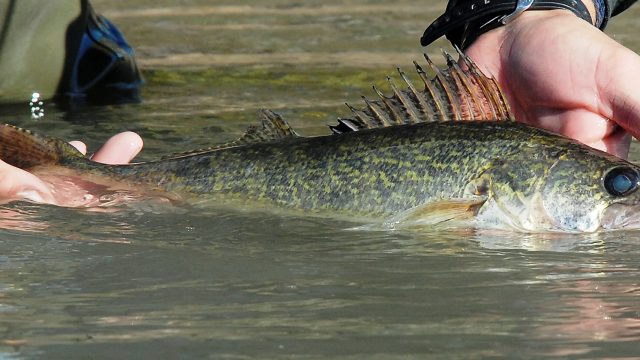Doug Leier: Statewide Minimum Length Limit For Walleyes Not Needed

When you’re talking fishing, it really doesn’t matter where you’re at.
Bait shop, coffee shop, boat landing or campfire, there’s plenty of stories, from forgetting to put the plug in, to a storm brewing up from out of nowhere, to the one that got away.
A lot of times, when the people involved in the conversations know that I work for the North Dakota Game and fish Department, those “ones that got away” stories often lead to “Why doesn’t the Game and Fish Department…?”
Over the past few years, one of those “Why doesn’t Game and Fish …?” questions that comes up fairly frequently is something like “Wouldn’t fishing be better if we had a statewide minimum length limit for walleyes?”
Rather than try to answer that question myself, I’ll refer to Scott Gangl, the Game and Fish Department’s fisheries management section leader. Gangl authored an article in North Dakota OUTDOORSmagazine last year, which covered that very subject.
When a walleye population has few young fish due to poor reproduction or stocking success, but those fish are growing well, a minimum length limit could help protect young fish to grow to a size that would provide more benefit to anglers. Of course, for any fishing regulation to be effective, angler harvest must have more of an effect on the population than other natural sources of mortality.
Lake Sakakawea’s walleye population today meets two of the criteria for a minimum length limit – low natural mortality and good growth. But Sakakawea’s walleyes in 2014 do not exhibit any signs of a population in need of a minimum length limit, such as low reproductive or stocking success, or high fishing mortality. In fact, natural and fishing mortality combined has been around 30 percent on Sakakawea in recent years, which is sustainable when compared to more heavily fished populations.
In addition, the combination of natural reproduction and good overall stocking success since 2010 has produced abundant young fish that are growing well and should reach a desirable size in another year or two.
The walleye population in the Garrison Reach of the Missouri River – from Garrison Dam downstream past Bismarck to the headwaters of Lake Oahe – and in Lake Oahe itself, is currently quite a bit different than Sakakawea’s. While small fish are abundant following strong natural reproduction in 2009 and 2011, a major decline in forage abundance after the 2011 flood has decreased their growth rate. A lack of food, teamed with a robust northern pike population, has also increased natural mortality.
Given the current situation, anglers are encouraged to harvest some smaller walleye to prevent fish from dying. Thus, a minimum length limit is not advisable on this population.
At Devils Lake, rising water levels have led to strong natural reproduction in recent years. Currently, there is no shortage of small fish in the population, and growth rates have decreased substantially since 2008. Since overall mortality rates are not excessive, it would be better to allow harvest of small walleye at Devils Lake rather than restrict it with a minimum length limit.
While a few lakes and reservoirs in North Dakota do have special restrictions, those are unique. In the name of balancing angler opportunity with biological support, it makes more sense on both levels to provide anglers consistency for most waters across the state, rather than restrict anglers categorically based on social pressure.
Don’t forget, water conditions and fisheries populations have, can and will change. Which is why Game and Fish biologists conduct consistent research, evaluate scientific evidence and monitor waters, so future changes are never totally out of consideration.




